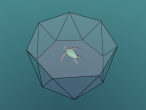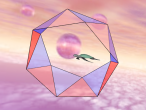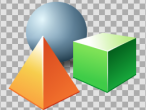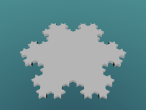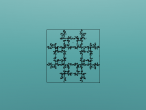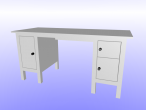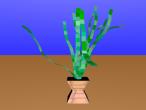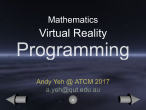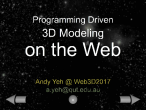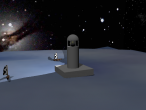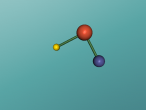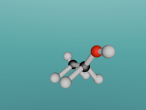Brisbane State High School
In this group, Year 9 students will be creating 3D atomic models and blogging about the characteristics, structure and composition of atoms and molecules. Together we are learning and sharing our knowledge construction about atoms and molecules.
For example, below is a model of a helium atom and a water molecule.
Please download the attached Aspire Science Workshop Handbook.pdf at the end of this group page. Before the workshop at QUT, you should have followed the handbook to at least section 3.5. In addition to this handbook, you may try:
- The VRMath2 Wiki has some tutorials about how to edit and publish.
- Students can also post in the VRMath2 forum for technical support.
The Aspire Science VRMath2 Workshop @ QUT
This Workshop will be held on Tuesday 19th July from 9 am to 2:30 pm, at S Block, Creative Inquiry Space (S307/308), QUT Kelvin Grove Campus. The building S Block is right next to the Kelvin Grove bus station of Inner Northern Busway (See attached campus map for details). It is suggested that you should arrive between 8:30 am to 9:00 am for setting up your groups and wifi access. The Workshop will begin promptly at 9 am. If you are taking public transport, bus will be the best choice. Please check on TransLink website to find out your bus routes.
If you are being dropped off by private cars, the best place to drop off will be near the intersection between Victoria Park Road and Blamey Street (see the attache Campus Map for details). Then you can walk up Ring Road to S Block.
NOTE: Due to construction, the Ring Road may be closed so try not to drop off at Ring Road.
Latest Group Blogs

Sodium Fluoride
Sodium fluoride is a molecule which is made up of sodium (Na) and fluoride (F) with a ration of 1:1. The blog presented will be describing and explaining the composition, structure and characteristics of this molecule. It's most common use, as afore mentioned is in toothpaste, where it strengthens the teeth, and makes them more resistant to decay caused by acidic substances and bacteria. Sodium toxic is highly toxic and can be lethal to humans if ingested in large quantities. This makes it effective for rat poisons and insecticides. It also is used as a cleaning agent.
Ethanol Molecule
VR MATHS 2.0 BLOG-Yerong Yang
Atoms are the fundamental units and building blocks of matter. The periodic table lists the currently discovered pure elements that are used to form other substances. Along with these stable elements, there are a variety of other atoms and molecule types that are built and bonded together to form new compounds. The substance ethanol consists of molecules that a joint to form this chemical drug. Ethanol molecules are formed from different types of elements and share different bonds to form their molecular state. This blog displays the completed 3D theoretical model of the chlorine atom based on the current information that's up to date on this known molecule. The blog will explore the properties and different aspects of ethanol as well as the development of the model on the program VRmaths 2.0.
Sodium Flouride 3D Model
3D Model of Fluorine Atom
3D Models of Atom Blog – Fluorine
Introduction:
The topic of this blog is going to be about an atom i.e. fluorine. Using a program called VRMath2.0, my group created a 3D model of fluorine which included the nucleus of the atom and its outer shells. This blog will include the following components: a 3D model of the atom Fluorine, a description on the composition, structure and characteristics of Fluorine, questions that I wish to investigate further and the difficulties that I experienced throughout the programming.
Fluorine is a chemical element represented by the symbol ‘F’ and has an atomic number of 9. It is classified as a non-metal and is the first element in the family of halogen gases. Given that it is the top element in the Halogen Group, it is the most electronegative element and therefore is very reactive. (Feldman, R. & Marsden, S., 2015) There are a few common usage of Fluorine and this element can be found in a variety of items and objects including rocket fuel, refrigeration fluids and toothpaste (helps to prevent tooth decay). (Chem4Kids, 2016)
- 58894 reads

